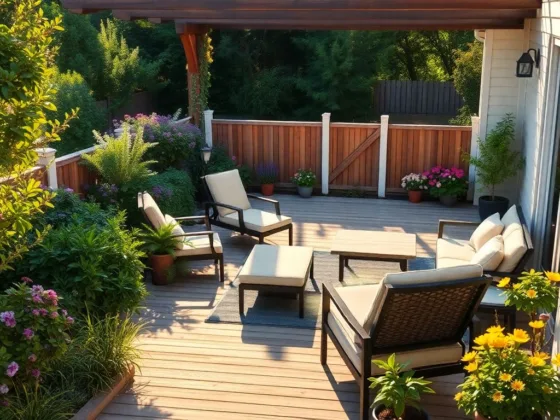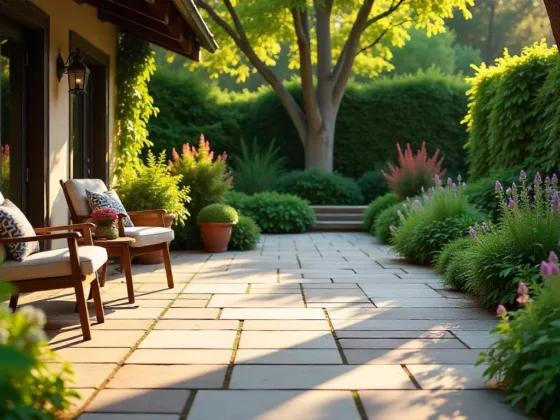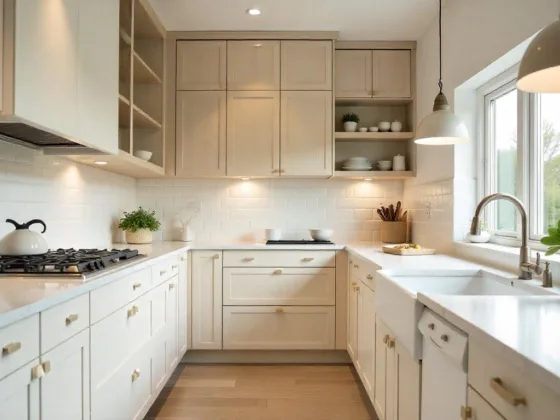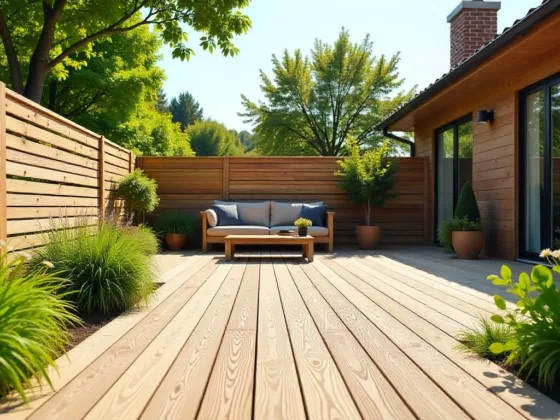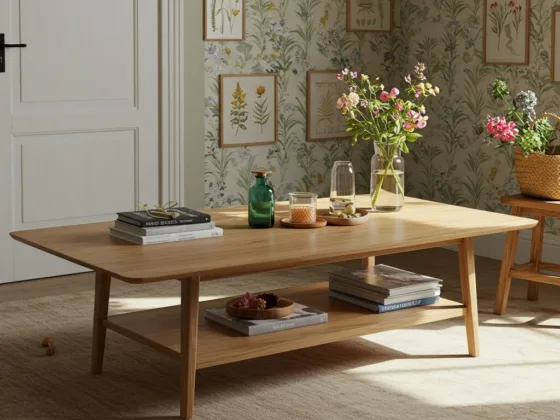Table of Contents Show
Imagine stepping outside to enjoy the beautiful weather, only to be confused about your outdoor space. Is it a lanai or a patio? Understanding the difference can enhance your outdoor living experience.
While both offer unique benefits, they have distinct origins and design features. This article will clarify the key differences between lanais and patios.
Defining a Lanai: More Than Just an Outdoor Space
Lanai Origins and Architectural Style
The word “lanai” originates from Hawaiian culture, symbolizing a specific type of covered veranda. Traditionally, lanais are associated with tropical settings, providing a sheltered space to enjoy the outdoors year-round.
The architectural style often incorporates open sides that connect seamlessly with the landscape, allowing breezes to flow through while shading from direct sunlight.
Key Features of a Lanai
Lanais are characterized by:
- Roofed structures: Provides protection from sun and rain.
- Screened enclosures: Keeps insects out while allowing fresh air in.
- Integration with the home: Often designed to extend living spaces, creating a smooth transition from indoors to outdoors.
Examples of lanai styles include contemporary designs with large glass doors and more traditional setups with wooden beams and tropical decor.
Regional Variations
Lanai designs can vary significantly depending on climate. In warmer regions, you may find fully enclosed lanais for year-round use, while areas with milder weather might emphasize open sides for airflow and natural light.
Understanding a Patio: The Classic Outdoor Living Area
Patio Materials and Construction
Patios are versatile and can be made from various materials, including:
- Concrete
- Brick
- Stone
- Pavers
Patios are typically flat surfaces laid directly on the ground, making construction relatively simple and cost-effective.
Patio Design and Functionality
Patios can serve multiple purposes, such as:
- Dining spaces with tables and chairs
- Lounging areas equipped with lounge chairs and umbrellas
- Entertainment zones featuring grills and outdoor kitchens
Layouts can be customized based on personal preferences and available space.
Patio Accessories and Enhancements
To enhance patios, consider adding:
- Fire pits: For warmth and ambiance during cooler nights.
- Pergolas or umbrellas: To provide shade and comfort.
- Outdoor furniture: To create inviting areas for gathering and relaxation.
RELATED: Patio or Deck – Which is Best?
Lanai vs. Patio: A Head-to-Head Comparison
Roofing and Enclosure
The primary difference between lanais and patios is the presence of a roof.
- Lanais usually come with a roof and may include screens to keep out insects. This design offers protection from the rain and sun, allowing for comfortable use in various weather conditions.
- Patios are typically open-air structures. Without a roof, patios are fully exposed to the weather, meaning users may have to deal with sun, rain, or wind during their outdoor activities.
Integration with the Home
Lanais are built to fit with the style and layout of the home. They often connect directly to main living areas, creating a smooth transition between indoor and outdoor spaces. This design helps enhance the overall aesthetic of the house.
On the other hand, patios can be placed anywhere in the yard. Their location can make it more challenging to blend them visually and functionally with the house. A well-designed patio needs careful planning to ensure it complements the home’s appearance and serves its intended purpose.
Climate Considerations
Lanais are particularly suited for warmer climates. They offer a comfortable outdoor space while protecting users from harsh weather. The roof and enclosure provide shade and shelter, making them ideal for enjoying the outdoors in hot conditions.
Patios, however, can be used in many different climates. While they can be enjoyable in sunny weather, they may require additional features. For instance:
- Umbrellas can provide shade during the day
- Fire pits can add warmth during cooler evenings
This versatility allows patios to be adapted for various weather situations, but they may not provide the same level of comfort as lanais.
Choosing Between a Lanai and a Patio: Factors to Consider
Budget
Constructing a lanai can be more expensive due to its roofed design and potential for more elaborate features. Average construction costs can range from $15,000 to $30,000, depending on size and materials. In contrast, patio costs can be more manageable, often averaging between $2,500 and $10,000.
Lifestyle and Usage
Consider how you plan to use the space. For frequent outdoor dining, a patio might suit better. If you prefer a shaded spot for year-round use, a lanai is ideal.
Local Building Codes and Regulations
Before construction, it’s crucial to check local building codes and regulations. These can affect the type and style of outdoor space you can build. Always consult local ordinances to ensure compliance.
Maintenance and Upkeep: Lanai vs. Patio
Cleaning and Repair
The maintenance needs for lanais and patios are quite different.
Lanais
Lanais have roofs and screens, which means they often collect dust, leaves, and other debris. Regular cleaning is necessary to keep these surfaces looking their best and to prevent buildup that can lead to more problems down the line.
This cleaning can involve wiping down surfaces and ensuring that screens are free of dirt and grime, allowing for clear views and better airflow.
Patios
In contrast, patios generally require less frequent cleaning. However, they are not without their own issues. Patios are exposed to the elements, which can lead to cracking, fading, or wear over time.
This exposure to weather conditions means that while cleaning may be simpler, repairs can become necessary as the materials degrade.
RELATED: The Latest Patio Design Ideas That Should Inspire You Today
Longevity and Durability
When it comes to longevity, lanais tend to last quite a long time, especially if they are constructed with high-quality materials. In general, lanais have a lifespan that ranges from 15 to 25 years, depending on how well they are maintained and the environment they are in.
On the other hand, patios also have a good lifespan but typically last between 10 to 20 years. The actual duration largely depends on the type of materials used. For instance, concrete patios might last longer than wooden ones, but both require proper care to maximize their lifespan.
Potential Repairs and Costs
Repair needs and costs can vary significantly between the two.
Lanais Repairs
A common repair for lanais might involve replacing screens, which can cost anywhere from $100 to $500. This price depends on factors such as the size of the screen and the type of material used.
Patio Repairs
In contrast, patio repairs often focus on issues like cracking or shifting surfaces. These repairs usually fall in the range of $50 to $200, depending on how severe the damage is and the materials involved.
Understanding these differences can help homeowners prepare for the maintenance costs associated with each structure.
Conclusion
Both lanais and patios offer unique advantages based on your needs and preferences. In summary, lanais provide sheltered comfort, while patios offer versatility and openness. Pay attention to your budget, lifestyle, and local regulations when making your choice. Reflect on your ideal outdoor oasis and decide which structure best suits your vision for relaxation and enjoyment.
FAQs
A lanai is a covered outdoor space that is often screened in, allowing for a sheltered environment to enjoy the outdoors while protecting against sun and insects. In contrast, a patio is typically an open-air area made from materials like concrete or stone, designed for various outdoor activities but without a roof or screens.
Yes, lanais are designed for year-round use, especially in warmer climates. They provide protection from rain and direct sunlight, making them a comfortable outdoor space regardless of the weather.
Constructing a lanai can be more expensive, with costs ranging from $15,000 to $30,000 depending on size and materials. On the other hand, patios are generally more budget-friendly, averaging between $2,500 and $10,000.
Yes, lanais tend to require more maintenance due to their roofs and screens. Regular cleaning is necessary to keep them free from dust and debris. Patios typically need less upkeep, though they may face weather-related issues like cracking.
Consider your budget, how you plan to use the space (such as for dining or lounging), and local building codes. Think about your lifestyle and preferences for comfort versus openness in your outdoor area.
Lanais usually last between 15 to 25 years with quality materials, while patios can last around 10 to 20 years depending on the material and maintenance. Proper care can extend the lifespan of both structures.


